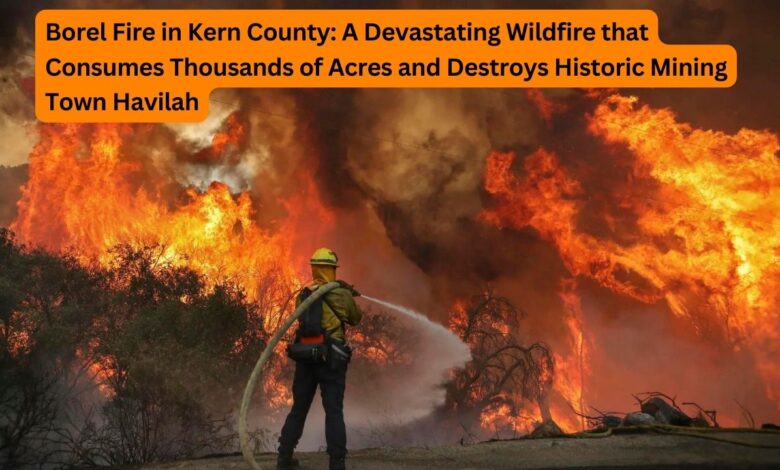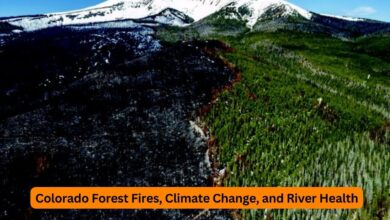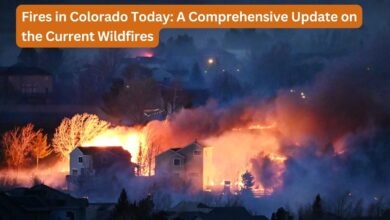Borel Fire in Kern County: A Devastating Wildfire that Consumes Thousands of Acres and Destroys Historic Mining Town Havilah

Introduction: The Borel Fire, a catastrophic wildfire in Kern County, California, has wreaked havoc over the past few days, burning through thousands of acres and causing millions of dollars in damages. This fire, one of the many wildfires plaguing California, has left a trail of destruction in its wake, including the near-total loss of the historic mining town of Havilah. This article delves into the details of the Borel Fire, its impact on the region, the efforts to contain it, and the broader context of California’s ongoing wildfire crisis.
The Devastation of the Borel Fire
Extent of the Fire: In just four days, the Borel Fire has scorched 53,010 acres across Kern County, located approximately 132 miles north of Los Angeles. Despite the valiant efforts of firefighters and emergency responders, the fire remains 0% contained, according to InciWeb. The rapid spread of the fire has been fueled by a combination of dry conditions, high temperatures, and strong winds, creating a perfect storm for wildfire activity.
Economic Impact: The financial toll of the Borel Fire has been significant, with damages estimated at over $2.5 million. This figure encompasses the destruction of homes, businesses, infrastructure, and natural resources. The cost of firefighting efforts and the economic disruption caused by evacuations and road closures further add to the overall impact.
Evacuations and Human Impact
Evacuations: Approximately 2,300 residents have been evacuated from the affected areas, seeking safety from the advancing flames. Evacuation centers have been set up to provide temporary shelter, food, and medical assistance to those displaced by the fire. The evacuation process has been challenging, as the fire’s rapid spread has left little time for residents to gather their belongings and secure their homes.
Human Stories: The human impact of the Borel Fire is profound, with countless stories of loss and resilience emerging from the affected communities. Families have been uprooted, homes have been reduced to ashes, and treasured possessions have been lost forever. The emotional toll on residents is immeasurable, as they grapple with the uncertainty of their future and the daunting task of rebuilding their lives.
Destruction of Havilah: A Historic Loss
Havilah’s Significance: Havilah, a historic mining town founded during the California Gold Rush, holds a special place in the state’s history. Once a bustling center of gold mining activity, Havilah has long been a symbol of California’s rich heritage and pioneering spirit. The town’s historic buildings and artifacts have been preserved as a testament to its storied past.
Impact on Havilah: The Borel Fire has devastated Havilah, reducing much of the town to charred remains. Except for a handful of structures, including the old schoolhouse, the town has been almost completely destroyed. This loss is not only a blow to the residents of Havilah but also to the broader community that cherishes its historical significance. The destruction of Havilah serves as a stark reminder of the vulnerability of our cultural heritage to natural disasters.
Causes and Contributing Factors
Climate Change: The Borel Fire, like many others in recent years, has been exacerbated by the effects of climate change. Rising temperatures, prolonged droughts, and changing precipitation patterns have created ideal conditions for wildfires to ignite and spread. The increased frequency and intensity of wildfires in California are closely linked to these broader environmental changes.
Human Activity: While the exact cause of the Borel Fire is still under investigation, human activity is a common factor in many wildfires. Whether through accidental ignition, such as a discarded cigarette or an unattended campfire, or deliberate acts of arson, human actions play a significant role in the outbreak and spread of wildfires. Ensuring that communities are aware of fire safety practices and the importance of responsible behavior is crucial in preventing future fires.
Efforts to Contain the Fire
Firefighting Efforts: Firefighters from across the state have been deployed to combat the Borel Fire. Despite their tireless efforts, the fire’s rapid spread and challenging terrain have made containment difficult. A combination of ground crews, aerial support, and specialized equipment is being used to battle the flames and protect critical infrastructure and communities.
Challenges: The efforts to contain the Borel Fire are hampered by several factors, including the rugged landscape, limited access to water sources, and the fire’s unpredictable behavior. High temperatures and strong winds continue to pose significant challenges, making it difficult to establish containment lines and prevent the fire from spreading further.
Broader Context: California’s Wildfire Crisis
Ongoing Wildfires: The Borel Fire is just one of over 100 wildfires currently burning across the United States, with many of them concentrated in California. The state has faced an unprecedented wildfire season, with millions of acres burned and thousands of structures destroyed. The Park Fire, another major blaze, has already become the largest wildfire of the year, highlighting the scale of the crisis.
Impact on Communities: The impact of the wildfire crisis extends beyond the immediate destruction of homes and businesses. Communities are dealing with long-term consequences, including economic disruption, health risks from smoke exposure, and the psychological toll of repeated evacuations and losses. Rebuilding efforts are slow and costly, often taking years for communities to recover fully.
Environmental Consequences: Wildfires have profound environmental consequences, including the loss of wildlife habitat, soil erosion, and water quality degradation. The destruction of forests and other natural areas also contributes to climate change, as the carbon stored in vegetation is released into the atmosphere during fires. These environmental impacts further complicate efforts to address the underlying causes of wildfires.
Conclusion
The Borel Fire in Kern County is a stark reminder of the devastating impact that wildfires can have on communities and the environment. As the fire continues to burn, efforts to contain it and protect residents remain a top priority. The destruction of the historic mining town of Havilah underscores the cultural and historical losses that accompany these natural disasters. In the broader context of California’s ongoing wildfire crisis, the Borel Fire highlights the urgent need for comprehensive strategies to address climate change, promote fire safety, and support affected communities. The resilience and determination of those impacted by the fire serve as a testament to the human spirit’s ability to overcome even the most challenging circumstances.




